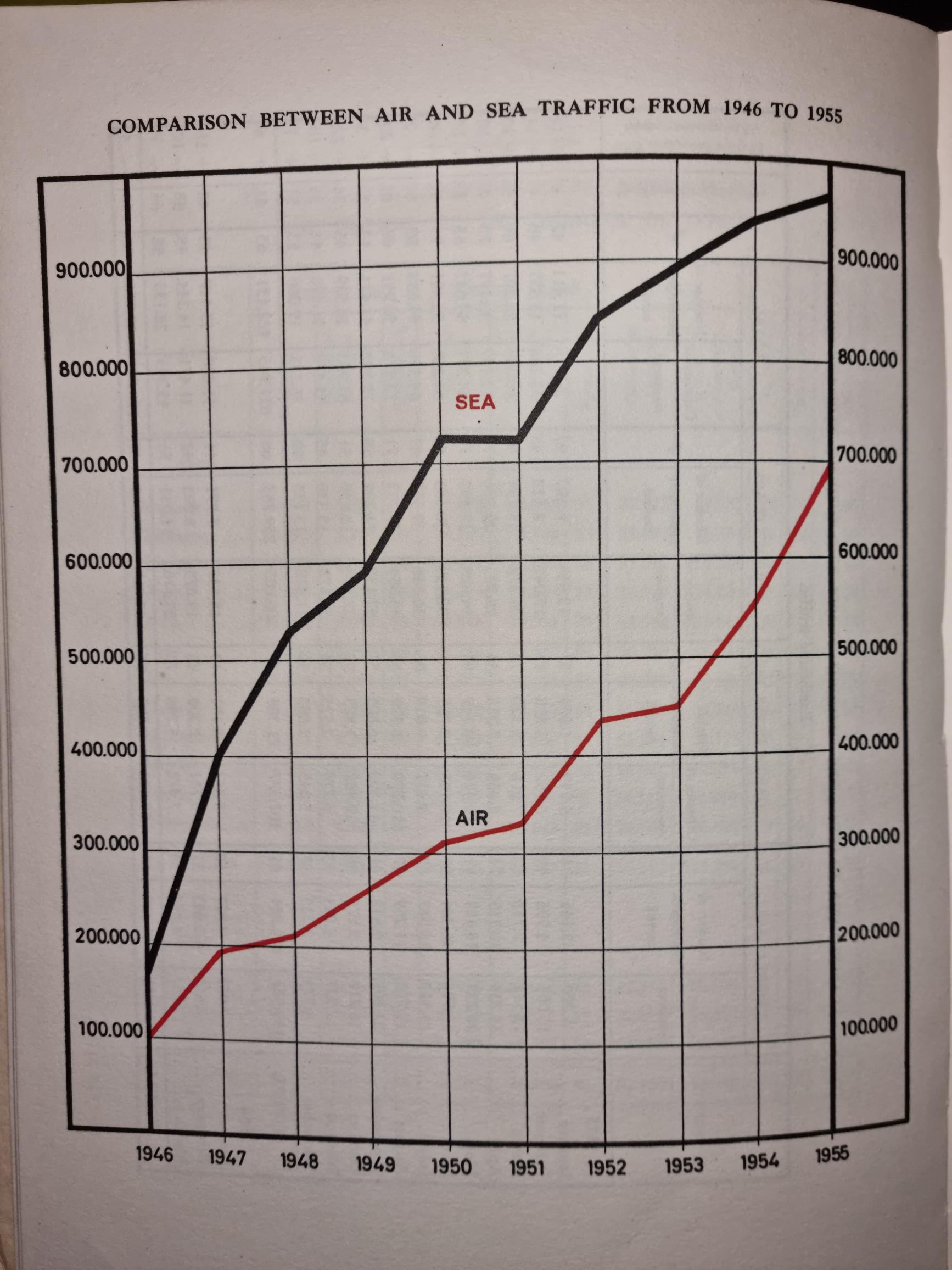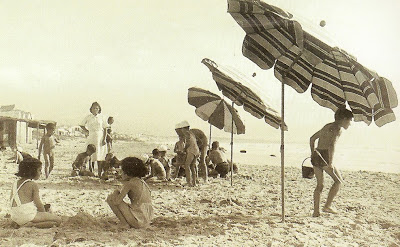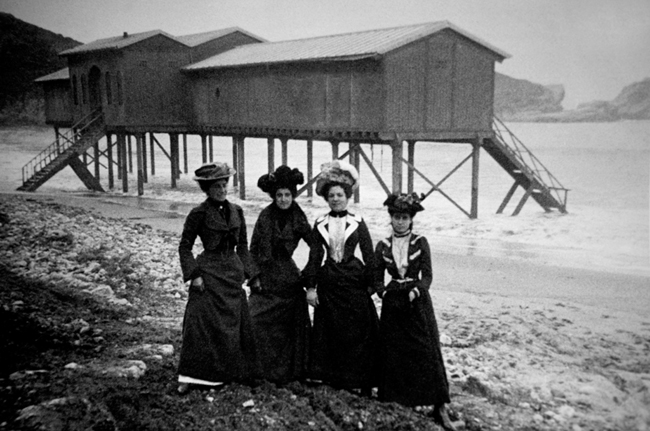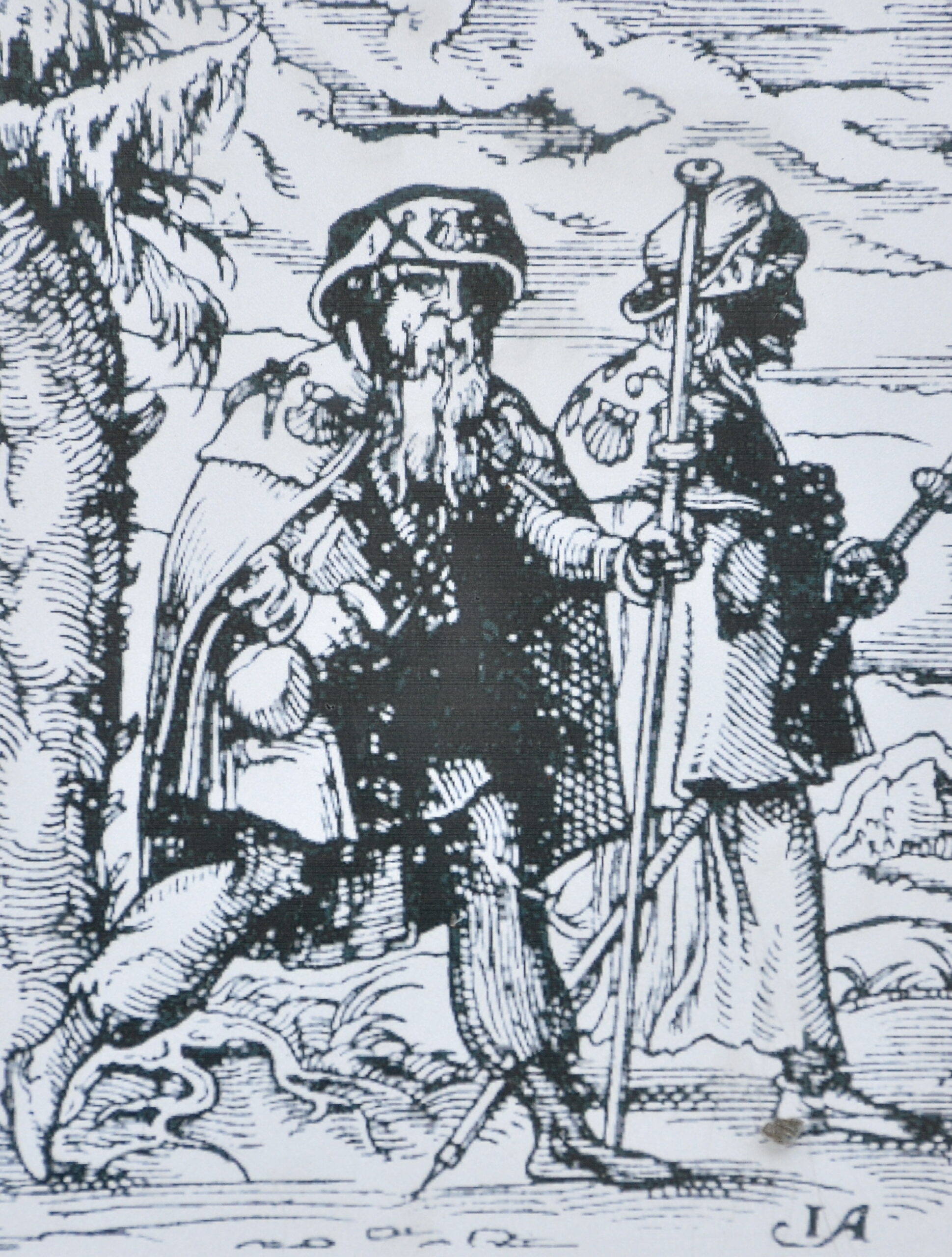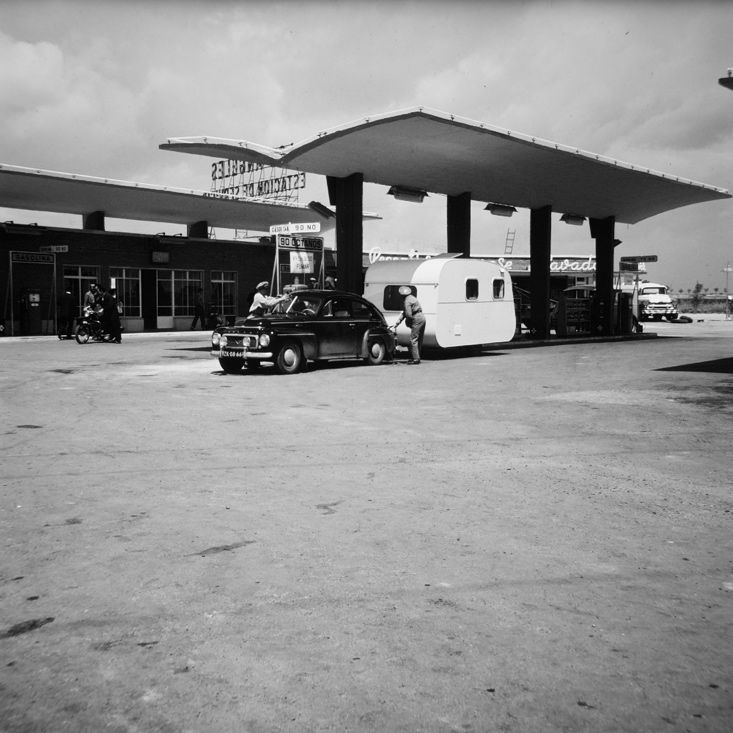The picture above presents an interesting overview of transatlantic traffic coming into Europe. It has been taken from a ‘White Paper on A Tourism Policy in Europe’, published in 1956 by the European Travel Commission. The graph clearly denotes a different time period, visible in both the numbers of travellers and the transportation methods used. It visualizes how, in the early post-war period, the majority of travellers still crossed the Atlantic by ship, a journey that could take 4 or 5 days[1].
What is interesting about the graph however, is that it also demonstrates an important turning point for travel and tourism globally. A point in time where the use of aircrafts started to pick up significantly. It is in these 10 years after the second world war that the first regular transatlantic commercial flights were established[2]. Through this new form of transportation, travel times between the US and Europe were greatly reduced, to under 24 hours. Travelling became increasingly accessible, allowing more and more to travel across this vast ocean, and for different purposes. The graph shows the number of flyers increasing by 700% in the 10 years following the war, a process that would only extend, slowly but surely leading in a new era in which ocean liners became obsolete.
The graph stops just before another historical point that would increase the popularity of air travel. 1958 is generally regarded as the beginning of the jet age, when jet engine aircrafts such as the Boeing 707 (and later the Boeing 747) were adopted[3]. This further increased accessibility and demand for (long-haul) travel, allowing it to become an important driver of economic growth for many countries and fostering increasing cultural exchange.
The tourism industry has grown immensely since, and now we might be at the foreground of a new turning point. In 2019 36 million travellers from the US arrived in Europe[4]. Looking at international travel more generally, European countries received around 744 million international travellers in that year[5]. The growth of travel has sparked concerns about various sustainability issues, related to aircraft emissions, overcrowding, or the loss of wildlife habitat, to name but a few.
Stakeholders across the tourism industry, and especially those working at the European Travel Commission, have an immense dedication to shape a positive future for Tourism. Collectively, we can once again establish a new era for the industry, now centred around sustainability. It leaves to wonder: which graph could be used in 50 years time, that will clearly demonstrate the earliest stages of this new age.
Through the Museum of Tourism’s room #106, various documents have been brought up out of the archives of the European Travel Commission. They reveal interesting insights into the development of tourism across Europe, and the role of the European Travel Commission in this development. I would like to invite anyone who is interested, and who has the chance, to see the objects within this, or any other room of the Museum of Tourism.
Menno Van Ijssel
Project Manager Research
European Travel Comission
[1] https://transportgeography.org/contents/chapter1/emergence-of-mechanized-transportation-systems/liner-transatlantic-crossing-time/
[2] https://transportgeography.org/contents/chapter1/emergence-of-mechanized-transportation-systems/liner-transatlantic-crossing-time/
[3] https://en.wikipedia.org/wiki/Boeing_707

